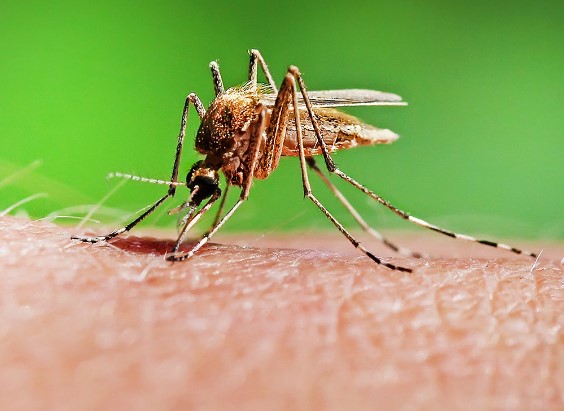Silent Threats: Impact of Mosquitoes on Agriculture

Photo is illustrative in nature. From open sources.
Agriculture, as the main source of food and raw materials, faces various challenges, and one of such invisible but serious enemies ismosquitoes _ At first glance, these blood-sucking insects may seem merely annoying, but their impact on crops can be devastating.
Spread of diseases:
One of the main concerns regarding mosquitoes in the agricultural context is their involvement in disease transmission. Mosquitoes serve as vectors for various diseases such as malaria and West Nile viruses, posing a threat to animal and human health. This creates additional difficulties for agricultural enterprises, which not only lose crops, but also face problems in managing livestock diseases.
Yield losses:
Mosquitoes cause damage to crops by feeding on their juices. Mosquito bites can cause not only local deformations of plants, but also reduce their overall resistance to diseases and pests. This leads to a decrease in yield, which, in turn, affects the income of agricultural producers.
Economic Losses:
In addition to direct crop losses, mosquitoes also cause economic losses due to the need to treat plants, clean up areas affected by insect attacks, and additional veterinary costs.treatment of livestock. These unexpected expenses put agricultural businesses in a difficult financial situation.
Control methods:
Mosquito control in agriculture requires an integrated approach. The use of biological controllers, the introduction of resistant plant varieties, and the use of environmentally friendly insecticides can mitigate the effects of mosquitoes without negative environmental consequences.
Conclusion:
The damage caused by mosquitoes in agriculture is becoming increasingly noticeable and requires immediate mitigation measures. Research into new technologies and innovative control methods can help prevent damage caused by these blood-sucking insects and ensure the sustainability of agricultural systems into the future.
Read together with it:
- Nobody wants to talk to meI am from Moscow. I don't understand why people don't want to communicate with me. I study at an institution where all (okay, not all, but many) students have similar interests.No, I'm not being ignored. I communicate with some people who are happy to see me. But they don't consider me friends. They...
- Mother-in-law violated the will of her late daughter-in-lawI leftmarry a man who has 2 marriages behind him, the first, as usual, broke up due to his youth, the second ended in great misfortune -wife died of cancer.From this marriage there was a little girl left, whom I later adopted. There are two children from his first marriage, whom theyMom kicked them ...
- Mom considers me a second-class citizenI am very offended by my mother.I had a bad luckan affair with one man. I am 26 years old, he is 38. We met on vacation. Hismother runs a hotel for tourists by the sea. He helps her, and I came to rest with them on the advice of friends.It so happened that I really liked him. He is beautifula man an...
- Mother-in-law is stealing money from the familyMy husband and I have in the pastdivorce and for a child from a previous marriage. Both have sons. Mine is 15 years old, after the divorce he lives with me, does not communicate with his father. His son is also 15, after the divorce he lives with his mother-in-law - exwife came outgot married and mo...
- Много ошибок из жизни, которые я поняла и получила опытЯ росла в неблагополучной семье. Нас в семье четверо, три брата старших и я самая младшая сестра. Старший брат умер в 2012 году от болезни, он сидел в тюрьме раза три за наркотики, средний брат сидел один раз за убийство (его подставили). Он уехал в другой город и живет со своей семьей. Третий брат ...
- Should I tell my mother-in-law the whole truth about her son?I have already told you about my story before, how I foundhusband for correspondence with another woman.My husband and I have been living officially for almost 11 years and have rented a room incredit . The loan is issued to me. I have a year left to pay. I caught my husband texting two weeks ago an...
- An unexpected turn in my family lifeI already wrote my story here, thatMy husband lives with me because of comfort. I didn’t have any facts of betrayal, but I just seemed to feel that something was wrong. He and I were planning children, but his behavior towards me at that time seemed strange to me, as if he had distanced himself emot...
- I'm used to being alone and I don't need anyoneI am 28 years old. I live alone with my daughter. Her husband died when she was six months old. I had to face many difficulties, but gradually everything got better. My daughter goes to kindergarten, I work, the work is normal, the salary is also good. We live separately in a small one-room apartmen...
- Black and whiteI often read this forum, and I noticed that many stories are extremely categorical, but not everything in our life is divided into black and white, a person does not always have a choice according to the rule, this is good and this is bad.For example, my mother-in-law is very offended that we no lon...
- My friend's storyI'll tell you a real life story about difficult family relationships. Irina lived with her husband Victor for 11 years. He's quite uniqueman . With unusual viewslife , onhealth . His firstwife lost a child during childbirth, suchmisfortune She, as I understand it, has some kind of serious illness, ...

